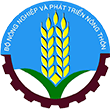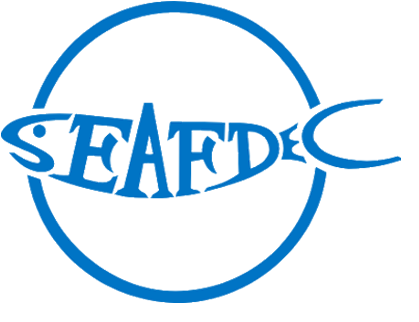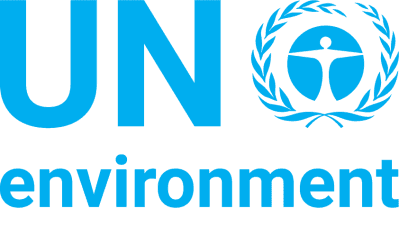Background & Situation Menu
Status and Trends in Fisheries and their Habitats Threats, root causes and barrier analysis Institutional, sectoral and policy context Stakeholder mapping and analysis Baseline analysis and gaps Known Areas of Critical Significance to the Life-Cycles of Fisheries Resources Priority Fisheries Refugia Areas




Establishment of Fisheries Refugia in Viet Nam:
Background and Situation Analysis to Support
Institutional, sectoral and policy context
This section discusses the basic instruments and support mechanisms for managing marine habitats and populations. It deals with legal instruments, i.e., national laws that also serve as the basis for local ordinances and for the country’s commitment to international agreements, and institutional arrangements in support of fisheries or coastal resources management initiatives, including the roles of various government agencies, research and academic institutions, and the local government units in monitoring, control, and enforcement. This section also examines patterns of resource ownership, the capacity of human resources and institutions to perform research, monitoring, control, and surveillance, as well as the role of management bodies and stakeholders in managing fisheries and coastal resources.
Legal instruments
There are many legal instruments for the management of Viet Nam’s fisheries. They include a large number of regulations (stipulating the objectives, functions, and organization of the fisheries sector), norms and standards (standards used in the fisheries sector; safety control of fishing boats; quality control of fishery products; and aquaculture management), duties of fisheries stakeholders (taxation regulations), behaviors on resource users.
The Fisheries Law No. 17/2003/QH11 provides the highest legal framework for all fisheries activities throughout the country. The law assigns the Ministry of Agriculture and Rural Development (MARD) to regulate the offshore fisheries and the Provincial People’s Committee (PPC) to be in charge of managing the near-shore fisheries bordered by the line 24 miles from the shore. MARD has a role to develop fisheries planning for the whole country whereas the PPCs develop their own fisheries planning based on the MARD planning system. Fish stocks and fisheries are governed administratively. This means that MARD, PPC, District People’s Committee, and Commune People’s Committee take responsibility for managing fisheries at the national, provincial, district, and communal levels respectively, instead of a fisheries management regime by species, fisheries, ecosystems or fishing areas.
The management process (data collection and analysis, making and adopting plans and policies, implementing and reviewing plans and policies) is exercised by the state management agencies. The other stakeholders may be invited to participate in the management processes as consultants. The Fisheries Law applies to all fisheries and related fisheries activities. The law comprises many policies and basic principles for general fisheries management.
As the concept of fisheries refugia is relatively new to be introduced in the region, up to now there is no formal regulation in Vietnam that has been issued, which is specifically regulating the establishment and operation of fisheries refugia system. Thus, the development of legal frameworks should be put as the highest priority during the implementation of the project in Vietnam. However, similar procedures that regulate the fisheries area for sustainable management and conservation purposes has been available for the references. Among those regulations that should be reviewed in the development of legal frameworks for the establishment and operation of fisheries refugia system in Vietnam are as follows:
Ordinance no. 18-LCT/HĐNN8 dated 25 April 1989 issued by National Assembly of Vietnam has an article that fishing activities in spawning grounds and nursery areas are permanently or temporarily/seasonally prohibited in order to protect the brood and juvenile stocks for ensuring the sustainable fishing recruitment. This is the first attempt that provides legislative basic for THE government to identify the specific management measures for fisheries resources and their critical habitats linkages.
Decrees no. 57/2008/NĐ-CP and Decrees no. 65/2010/NĐ-CP concerning the regulations for classification, designation, and management of Marine Protected Areas. In which, spawning grounds, as well as nursery areas, are identified as critical habitats being protected. In this context, MPAs focus on biodiversity conservation and fishing recruitment but the integration of fisheries management and habitats linkages as fisheries Refugia.
Biodiversity Law No. 20/2008/QH12 issued by the National Assembly of the Socialist Republic of Vietnam.
Decree No. 27/2005/NĐ-CP detailing and guiding the implementation of some provisions of the Fisheries Law, including Articles 2-4 provide detailed guidance on Marine Protected Areas.
Decree No. 65/ND-CP/2010 guiding the implementation of some articles in the Law on Biodiversity.
Decision No. 145/QD-BTS in 2007 of the Minister of Fisheries issued Guidelines on the establishment of marine protected areas and management planning of MPAs.
Institutional arrangements (research, monitoring, control, and enforcement)
The highest government agency responsible for the administration, development, and management of Viet Nam’s fisheries is the Ministry of Agriculture and Rural Development (MARD). The Directorate of Fisheries (D-FISH) advises and assists the Minister of Agriculture and Rural Development in state management and implementation of state management tasks related to fisheries, in managing and leading the public service activities within the management scope of the Directorate. D-FISH consists of the following departments:
Department of Fisheries Resources Surveillance
Department of Capture Fisheries and Resources Protection
Department of Legislation and Inspection
Department of Aquaculture
Department of Science, Technology and International Cooperation
Department of Planning and Finance
Department of Administration
Fisheries Center and Information
Center for Analysis and Verification of Aquaculture
Vietnam Institute of Fisheries Economics and Planning
Concerning capture fisheries at the central level, the Department of Capture Fisheries and Resources Protection is responsible for establishing policies for fisheries development and the renovation of non-state-owned fisheries enterprises. This Department, through its nationwide network of Provincial Sub-Department of Capture Fisheries and Resources Protection, takes care of resource protection and enhancement, quarantine, as well as vessel registration and licensing. In all coastal provinces, there is a Provincial Fisheries Sub-Department. In the inland provinces, the Sub-Department for Agriculture and Rural Development is responsible for fisheries. This department assists the local authority (People’s Committee) in the administration and development of fisheries. Normally, the department has subordinate networks at the district and community level in important areas for fisheries.
The Research Institute for Marine Fisheries (RIMF), established in 1961, is responsible for assessing fisheries resources and fleet performance. The Institute collects and analyses information and data derived from surveys and studies conducted in Vietnamese waters. The Institute’s research outputs provide MARD with a scientific base for the institution of management and development policies. The Research Institute of Fisheries Economics and Planning mainly deals with the development of master plans. Fisheries rules and regulations are enforced through monitoring and surveillance activities conducted by the fisheries inspection staff of the Fishery Resources Conservation Divisions, and coast guards, the navy and marine police.
To ensure proper management and development of fisheries, there is an administrative network from the national to grass-root levels in Viet Nam. This network is made up of representatives of MARD, the provincial Sub-departments, the district office, and the community in important fisheries areas. The enforcement units of all Provincial Sub-Department of Capture Fisheries and Resources Protection are equipped with patrol boats for surveillance. At important fishing harbors and river mouths, there are fisheries inspection stations. To supply scientific information to MARD (D-FISH), there is the Research Institute for Marine Fisheries (RIMF) and Institute of Fisheries Economics and Planning.
The Research Institute for Marine Fisheries (RIMF)
RIMF is part of the Ministry of Agriculture and Rural Development. At present, the RIMF headquarters are in Haiphong province, with a Marine Biodiversity Research Station on Cat Ba Island in the Gulf of Tonkin. The Government of Viet Nam has recently given approval for RIMF to establish a research center in the southeastern province of Vung Tau. A center for resource conservation and fisheries development is also planned for the province of Kien Giang (Gulf of Thailand).
RIMF has the main following tasks: 1) to survey and research living marine resources (distribution, migration, biology, stock assessment, potential yield estimates and resource conservation methods, etc.); 2) to study the marine environment and relationships between environment and fisheries development, including methods for monitoring the marine environment; 3) to study biodiversity and the establishment of marine protected areas (MPA); 4) to study, trial, develop and apply new technologies for exploiting fish; 5) to develop post-harvest technologies; 6) to transfer technologies in the fields of fishing, post-harvest technologies to all economic counterparts; 7) to provide postgraduate training on specific subjects and other training on marine fisheries science and technology; and 8) to provide consultation services.
Vietnam Institute of Fisheries Economics and Planning (D-FISH)
This institute conducts research on the economics and management of fisheries. Planning the restructuring of production and the establishment of regional and master plans are some of its key activities.
Centre for Fisheries Science and Information (FICen)
This center is responsible for gathering and supplying information to the fishery management process.
Other research institutions and agencies
Some other institutions and agencies involved in fisheries research are:
The Centre for Natural Resources and Environment Study (CRES) under the National University of Viet Nam (NU).
The Sub-institute for Forestry Sciences in South Viet Nam.
The Research Institute of Oceanography, Nha Trang.
The Institute of Marine Environment and Resources, Hai Phong.
The Branch Institute of Ecology of Biological Resources, Ho Chi Minh City
Extension Services
The top organization of fisheries extension services is the National Center for Extension, located in the Ministry of Agriculture and Rural Development. Extension centers have been established in 24 of the 28 coastal provinces, and in 26 inland provinces, with the purpose of transferring knowledge to fishers and fish farmers to enhance their activities. However, these organizations are currently focused mainly on aquaculture.